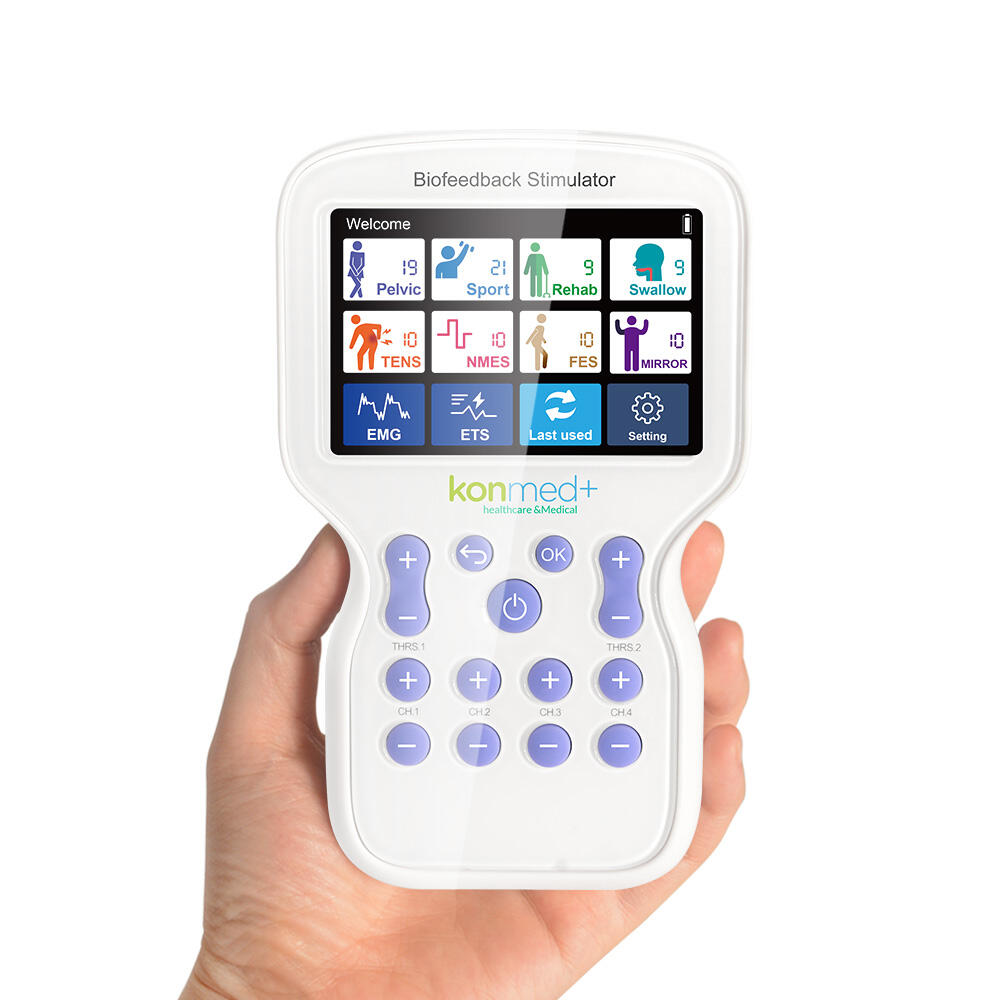Understanding Electromyographic Technology in Stroke Rehabilitation
The journey to recovery after a stroke can be challenging and complex, but modern rehabilitation techniques are offering new hope. Among these innovative approaches, electromyographic biofeedback has emerged as a powerful tool for improving motor function and enhancing the quality of life for stroke survivors. This sophisticated technology enables patients to visualize and understand their muscle activity in real-time, creating a direct pathway to better movement control and functional recovery.
Electromyographic biofeedback works by detecting electrical signals produced by muscles during contraction and relaxation. These signals are then converted into visual or auditory feedback that patients can observe and respond to, making the invisible processes of muscle activation visible and controllable. This immediate feedback allows stroke patients to modify their muscle activity consciously, leading to improved motor learning and more effective rehabilitation outcomes.
The Science Behind Electromyographic Biofeedback
Neural Plasticity and Motor Learning
At the core of biofeedback therapy lies the principle of neuroplasticity - the brain's remarkable ability to form new neural connections and reorganize existing ones. When stroke patients engage with biofeedback systems, they actively participate in rewiring their neural pathways. The continuous feedback loop created during therapy sessions helps strengthen these new connections, leading to lasting improvements in motor control.
Research has shown that the combination of visual feedback and focused attention during biofeedback sessions significantly enhances the brain's ability to adapt and learn new movement patterns. This process is particularly effective when therapy is initiated early in the rehabilitation journey, though benefits have been observed even in chronic stroke patients.
Muscle Activation Patterns
Understanding muscle activation patterns is crucial for effective rehabilitation. Biofeedback systems provide detailed information about when and how muscles are firing, allowing therapists to identify abnormal patterns and develop targeted interventions. This precise monitoring enables the development of personalized treatment protocols that address each patient's specific needs and challenges.
The technology can detect subtle changes in muscle activity that might be imperceptible through traditional observation alone. This heightened sensitivity helps patients recognize and correct movement compensations that could otherwise hinder their recovery progress.
Clinical Applications and Implementation
Treatment Protocol Design
Implementing biofeedback therapy requires careful consideration of various factors, including the patient's stroke severity, time since onset, and specific motor deficits. A typical protocol might begin with simple muscle activation exercises and gradually progress to more complex functional movements. The key is to maintain an appropriate challenge level that motivates patients while avoiding frustration.
Therapists often start with isolated muscle contractions, using biofeedback to help patients achieve better control. As patients improve, activities become more functional, incorporating real-life movements and tasks. This progression helps ensure that gains made during therapy translate effectively to daily activities.
Integration with Traditional Therapy
Biofeedback serves as a powerful complement to conventional rehabilitation techniques. When combined with traditional physical therapy, occupational therapy, and other rehabilitation approaches, biofeedback can enhance overall outcomes. The technology provides objective data that helps therapists track progress and adjust treatment plans accordingly.
The integration of biofeedback into existing rehabilitation programs requires careful coordination among healthcare providers. Success often depends on clear communication between team members and consistent application of therapeutic principles across all aspects of treatment.
Measuring Outcomes and Progress
Quantitative Assessment Tools
Modern biofeedback systems offer sophisticated measurement capabilities that allow for precise tracking of patient progress. These tools can measure various parameters, including muscle activation levels, timing of contractions, and movement accuracy. Such detailed data helps healthcare providers make informed decisions about treatment progression and modification.
Regular assessment using standardized measures helps document improvements and identify areas needing additional attention. This objective data is particularly valuable for insurance documentation and research purposes, as well as for maintaining patient motivation through demonstrable progress.
Quality of Life Impacts
Beyond the physical improvements measured through biofeedback systems, significant attention is paid to how these changes affect patients' daily lives. Researchers have documented improvements in independence, social participation, and overall life satisfaction among stroke patients who participate in biofeedback therapy programs.
The ability to perform daily activities with greater ease and confidence often leads to improved emotional well-being and reduced dependency on caregivers. These quality of life improvements represent crucial outcomes that extend well beyond the clinical setting.
Future Developments and Innovations
Technological Advancements
The field of biofeedback technology continues to evolve rapidly. New developments include wireless sensors, mobile applications, and virtual reality integration. These innovations are making biofeedback therapy more accessible, engaging, and effective for stroke patients.
Artificial intelligence and machine learning algorithms are being developed to provide more sophisticated analysis of movement patterns and better-tailored feedback. These advancements promise to further enhance the precision and effectiveness of rehabilitation programs.
Home-Based Applications
The development of user-friendly, portable biofeedback devices is opening new possibilities for home-based therapy. These systems allow patients to continue their rehabilitation exercises between clinical sessions, potentially accelerating recovery and improving outcomes. Remote monitoring capabilities enable therapists to track progress and adjust programs without requiring in-person visits.
The expansion of telehealth services is making it possible for patients in remote areas to access expert guidance while using home-based biofeedback systems. This increased accessibility is particularly valuable for maintaining long-term rehabilitation progress.
Frequently Asked Questions
How long does it take to see results from biofeedback therapy?
Results from biofeedback therapy vary among individuals, but many patients begin to notice improvements within 4-6 weeks of consistent practice. The rate of progress depends on factors such as stroke severity, time since onset, and commitment to the therapy program. Regular practice and proper technique are essential for optimal results.
Is biofeedback therapy covered by insurance?
Many insurance providers cover biofeedback therapy when prescribed as part of a comprehensive stroke rehabilitation program. Coverage details vary by provider and policy. It's recommended to verify coverage and obtain any necessary pre-authorizations before beginning treatment.
Can elderly patients benefit from biofeedback therapy?
Yes, elderly patients can significantly benefit from biofeedback therapy. The technology can be adapted to accommodate different ability levels and learning styles. Research has shown that age does not significantly impact the potential for improvement when using biofeedback in stroke rehabilitation.





